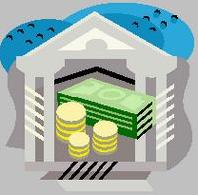
 |
|
| Financial Terms | |
| Normal portfolio |
|
Information about financial, finance, business, accounting, payroll, inventory, investment, money, inventory control, stock trading, financial advisor, tax advisor, credit.
Main Page: stock trading, financial, finance, payroll, money, inventory control, investment, business, Also see related: mortgage, property, financing, buy home, home, insurance, homes, homebuyer, home buyer, |
Definition of Normal portfolio
Normal portfolioA customized benchmark that includes all the securities from which a manager normally
Related Terms:CARs (cumulative abnormal returns)a measure used in academic finance articles to measure the excess returns an investor would have received over a particular time period if he or she were invested in a particular stock. Abnormal returnsPart of the return that is not due to systematic influences (market wide influences). In Active portfolio strategyA strategy that uses available information and forecasting techniques to seek a Complete portfolioThe entire portfolio, including risky and risk-free assets. Cumulative abnormal return (CAR)Sum of the differences between the expected return on a stock and the Dedicating a portfolioRelated: cash flow matching. Efficient portfolioA portfolio that provides the greatest expected return for a given level of risk (i.e. standard  Excess return on the market portfolioThe difference between the return on the market portfolio and the Factor portfolioA well-diversified portfolio constructed to have a beta of 1.0 on one factor and a beta of Feasible portfolioA portfolio that an investor can construct given the assets available. Feasible set of portfoliosThe collection of all feasible portfolios. Hedged portfolioA portfolio consisting of the long position in the stock and the short position in the call Leveraged portfolioA portfolio that includes risky assets purchased with funds borrowed. Lognormal distributionA distribution where the logarithm of the variable follows a normal distribution. Leveraged portfolioA portfolio that includes risky assets purchased with funds borrowed. Market portfolioA portfolio consisting of all assets available to investors, with each asset held -in  Markowitz efficient portfolioAlso called a mean-variance efficient portfolio, a portfolio that has the highest Markowitz efficient set of portfoliosThe collection of all efficient portfolios, graphically referred to as the Mean-variance efficient portfolioRelated: Markowitz efficient portfolio Minimum-variance portfolioThe portfolio of risky assets with lowest variance. Modern portfolio theoryPrinciples underlying the analysis and evaluation of rational portfolio choices Normal annuity formThe manner in which retirement benefits are paid out. Normal backwardation theoryHolds that the futures price will be bid down to a level below the expected Normal deviateRelated: standardized value Normal probability distributionA probability distribution for a continuous random variable that is forms a Normal random variableA random variable that has a normal probability distribution. Normalizing methodThe practice of making a charge in the income account equivalent to the tax savings  Optimal portfolioAn efficient portfolio most preferred by an investor because its risk/reward characteristics Passive portfolio strategyA strategy that involves minimal expectational input, and instead relies on Passive portfolioA market index portfolio. PortfolioA collection of investments, real and/or financial. Portfolio insuranceA strategy using a leveraged portfolio in the underlying stock to create a synthetic put Portfolio internal rate of returnThe rate of return computed by first determining the cash flows for all the Portfolio opportunity setThe expected return/standard deviation pairs of all portfolios that can be Portfolio managementRelated: Investment management Portfolio managerRelated: Investment manager Portfolio separation theoremAn investor's choice of a risky investment portfolio is separate from his Portfolio turnover rateFor an investment company, an annualized rate found by dividing the lesser of Portfolio varianceWeighted sum of the covariance and variances of the assets in a portfolio. Replicating portfolioA portfolio constructed to match an index or benchmark. Standardized normal distributionA normal distribution with a mean of 0 and a standard deviation of 1. Structured portfolio strategyA strategy in which a portfolio is designed to achieve the performance of some Tilted portfolioAn indexing strategy that is linked to active management through the emphasis of a Weighted average portfolio yieldThe weighted average of the yield of all the bonds in a portfolio. Well diversified portfolioA portfolio spread out over many securities in such a way that the weight in any Zero-beta portfolioA portfolio constructed to represent the risk-free asset, that is, having a beta of zero. Zero-investment portfolioA portfolio of zero net value established by buying and shorting component PortfolioA collection of securities and investments held by an investor Portfolio DiversificationSee diversification Portfolio WeightThe percentage of a total portfolio represented by a single specific net cost of normal spoilagethe cost of spoiled work less the estimated disposal value of that work normal capacitythe long-run (5–10 years) average production normal cost systema valuation method that uses actual normal lossan expected decline in units during the production process normal spoilagespoilage that has been planned or foreseen; is a product cost Normal (bell-shaped) distributionIn statistics, a theoretical frequency Spoilage, abnormalSpoilage arising from the production process that exceeds the normal Spoilage, normalThe amount of spoilage that naturally arises as part of a production market portfolioportfolio of all assets in the economy. In practice a broad stock market index, such as the Standard & Poor's Composite, is used to represent the market. Market PortfolioThe total of all investment opportunities available to the investor. Index Portfolio Rebalancing Service (IPRS)Index portfolio Rebalancing Service (IPRS) is a comprehensive investment service that can help increase potential returns while reducing volatility. Several portfolios are available, each with its own strategic balance of Index Funds. IPRS maintains your personal asset allocation by monitoring and rebalancing your portfolio semi-annually. Expense ratioThe percentage of the assets that were spent to run a mutual fund (as of the last annual Related to : financial, finance, business, accounting, payroll, inventory, investment, money, inventory control, stock trading, financial advisor, tax advisor, credit. |